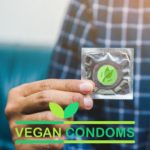Search Result
Condoms
Latex, non-latex, lambskin and vegan
The majority of condoms are made from two types of latex:
Natural rubber latex
Latex condoms weaken and damage easily when they come into contact with oil-based lubricants and other substances such as baby oil, mineral oil, suntan lotion, cooking oil, baby oil, petroleum jelly, cold creams, skin lotions and, bringing up the rear so to speak, butter or margarine.
Synthetic latex
A type of plastic (eg: polyisprene and polyurethane) doesn't irritate people with latex allergies. Though less stretchy than natural rubber latex, synthetic latex condoms can be very thin and be used with oil-based lubricants.
Lambskin condoms
If you or your partner is allergic to latex, options for condoms are less limited. An alternative to latex and non-latex condoms is made from a thin layer of sheep cecum, a part of the intestine. We mention them because you may come across them, but they DO NOT prevent the transmission of viral STIs, including HIV and herpes. On the upside, the lambskin condoms are effective against pregnancy; they don't trigger latex allergies, are biodegradable and can be used with oil-based lubricants.
 Vegan condoms
Vegan condoms
To make condoms from raw latex milk, many condoms have casein (an animal product that comes from milk) to create a softer texture - not an issue unless you're a vegan. While there's no residue of casein once the condom is made, most manufacturers use it, so most condoms cannot be called vegan.
After a deep dive, we understand the following brands are manufactured using milk thistle:
- EXS Condoms
- Fair Squared Condoms
- GLYDE Condoms
- Skins Condoms (Extra Large)

